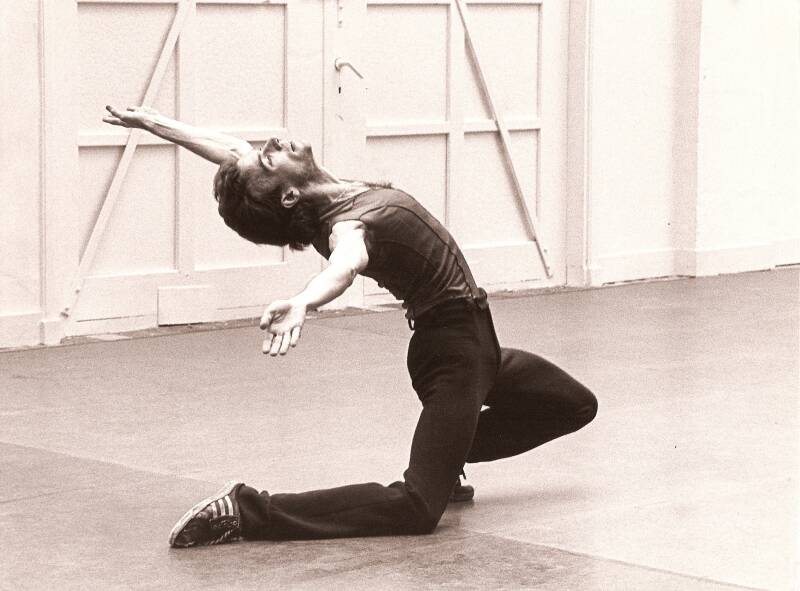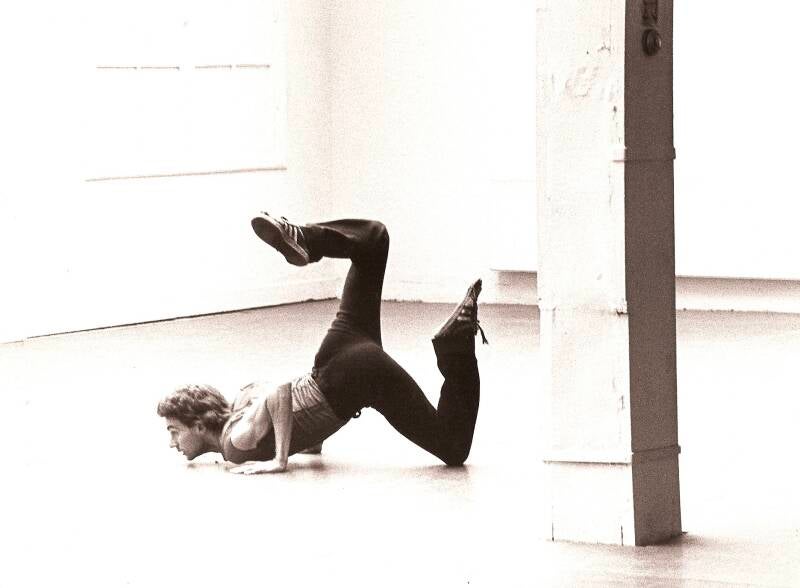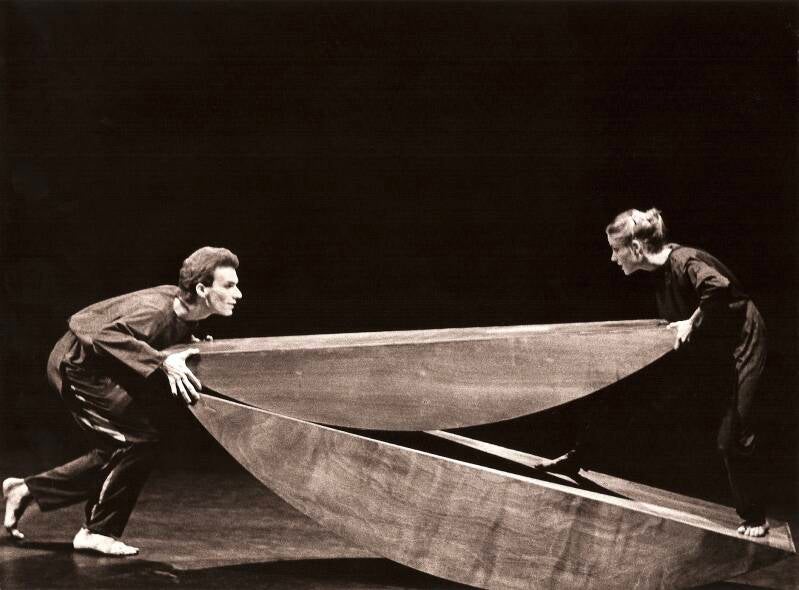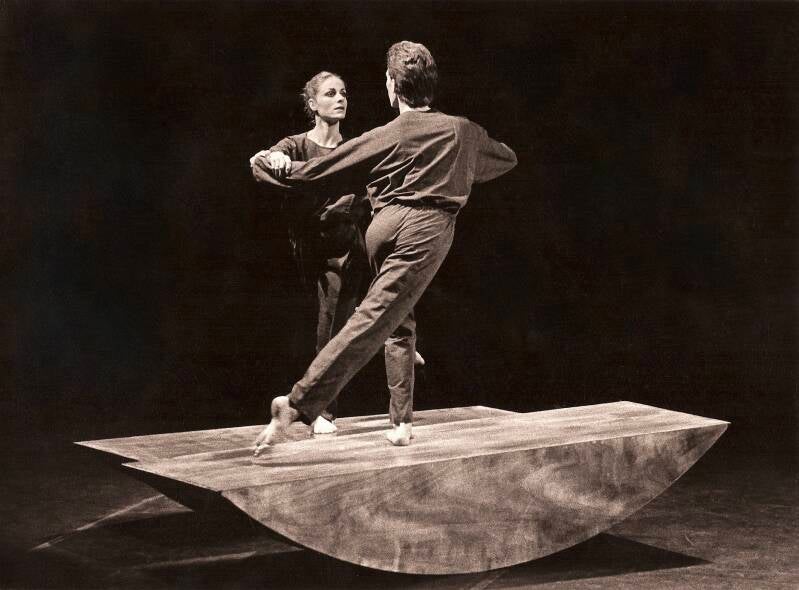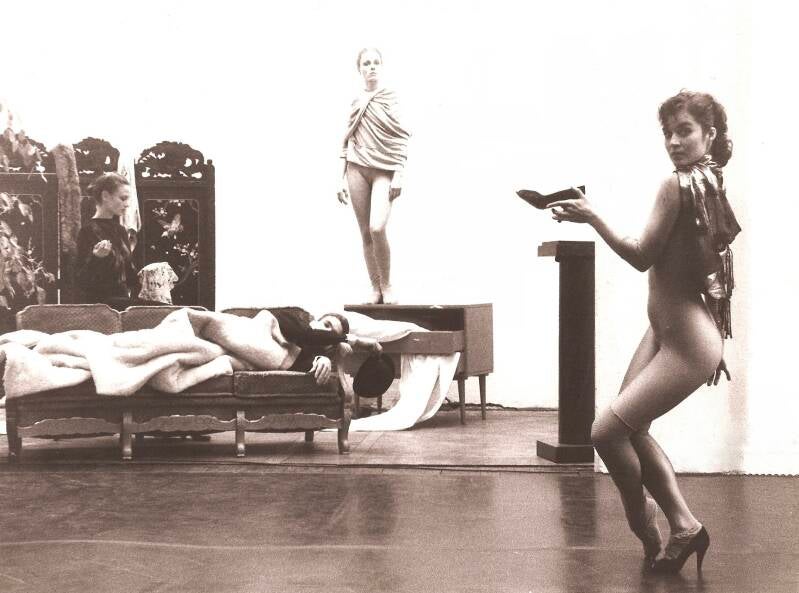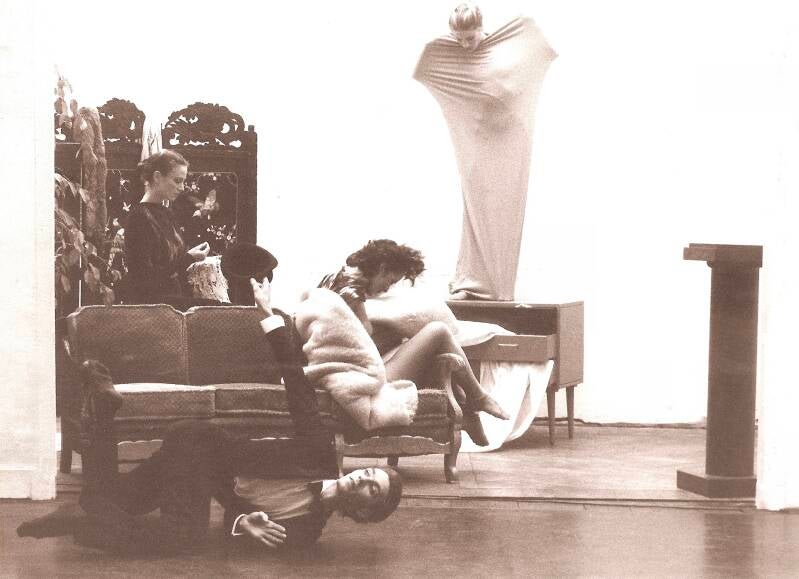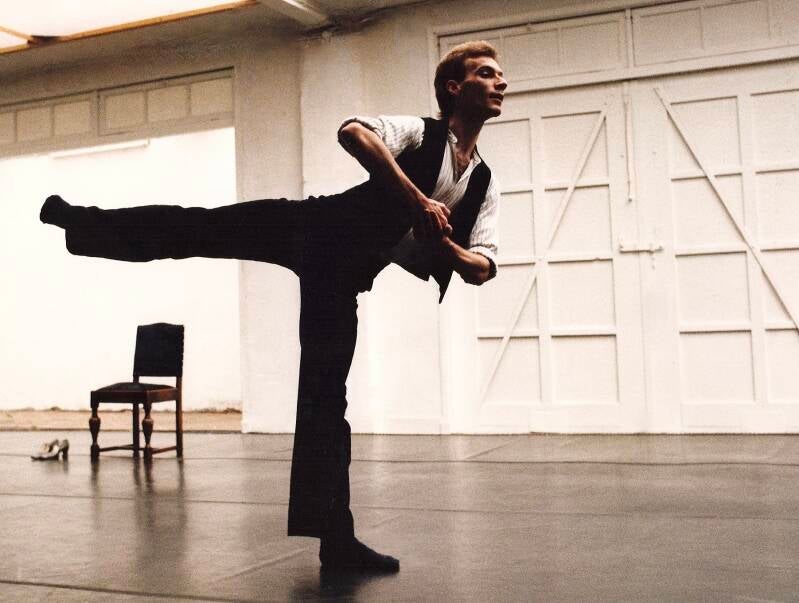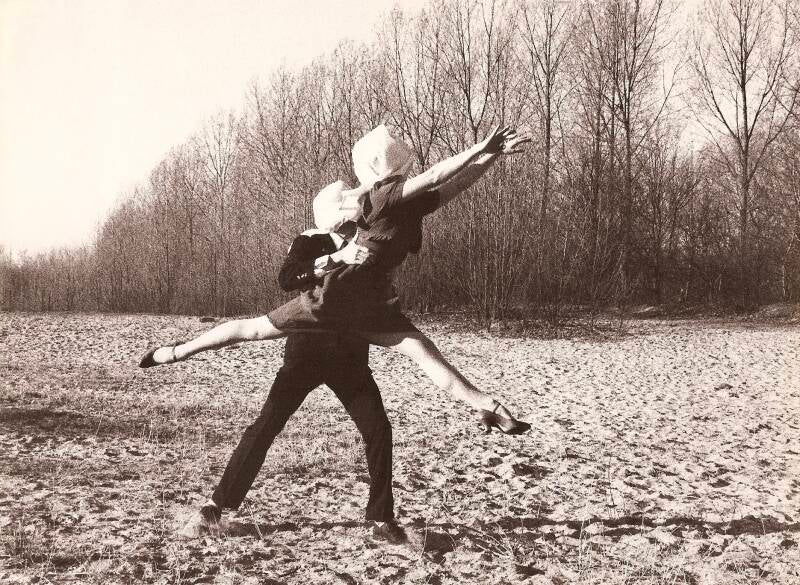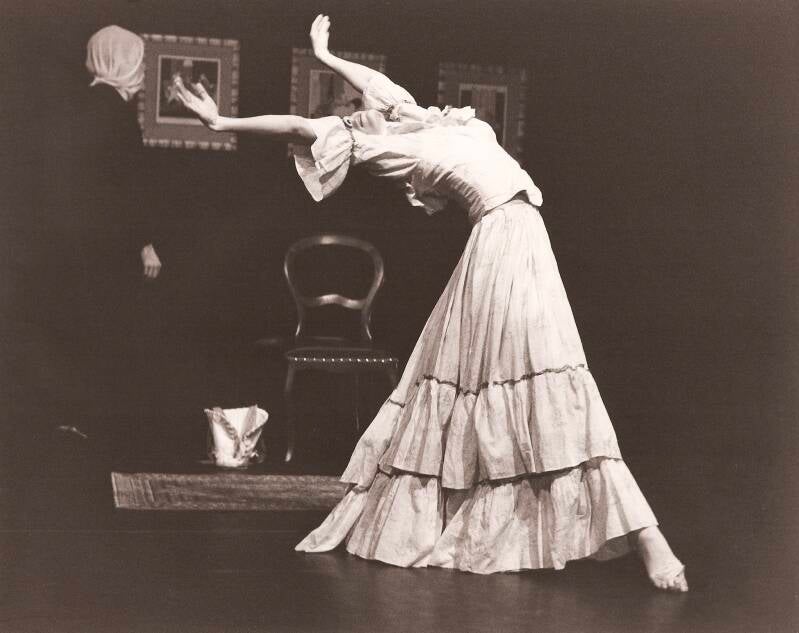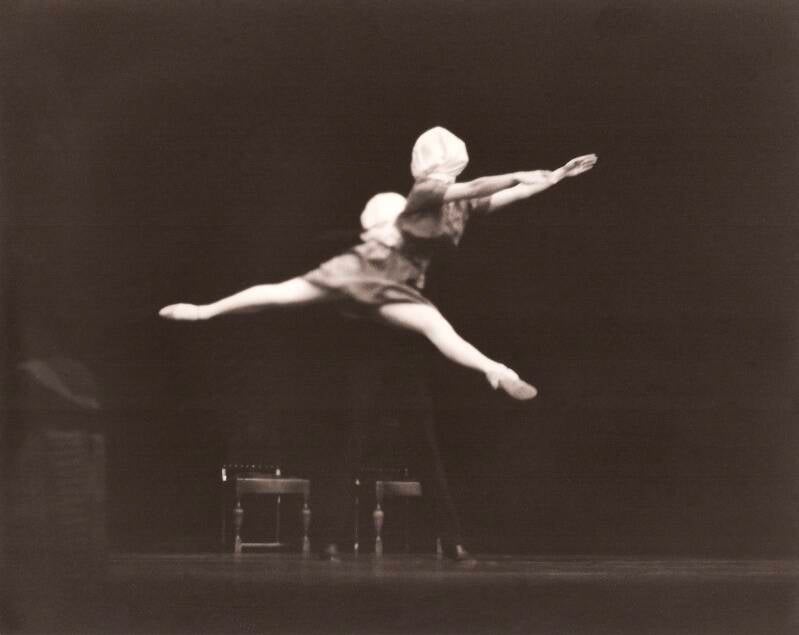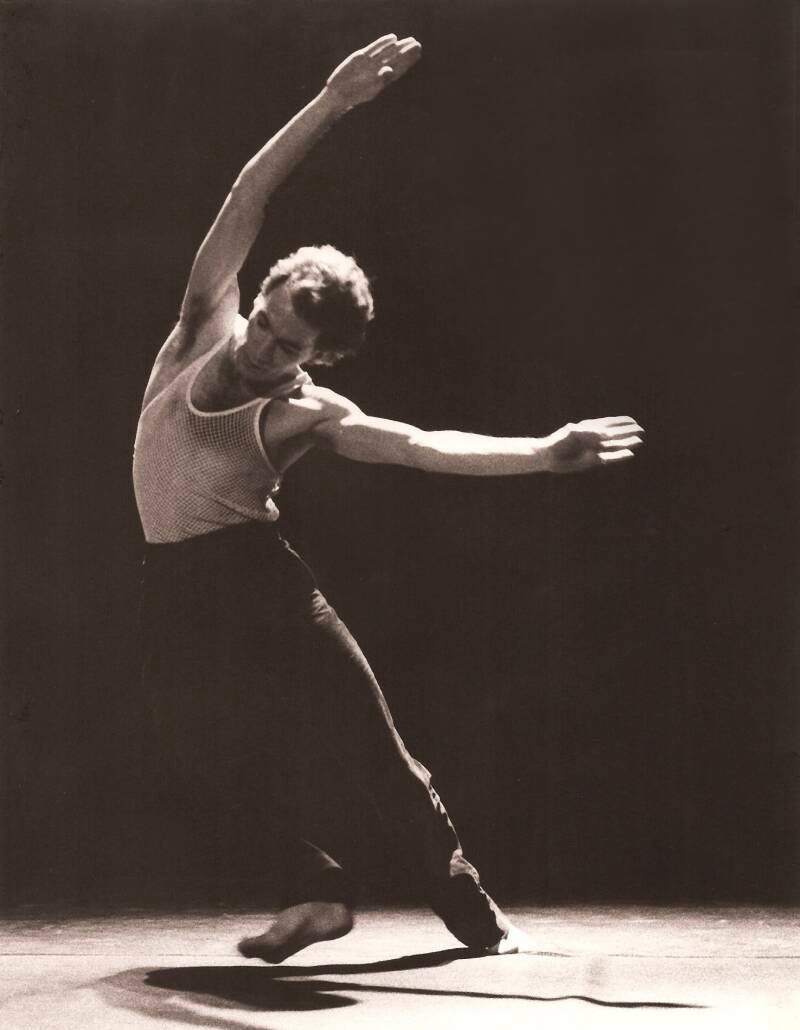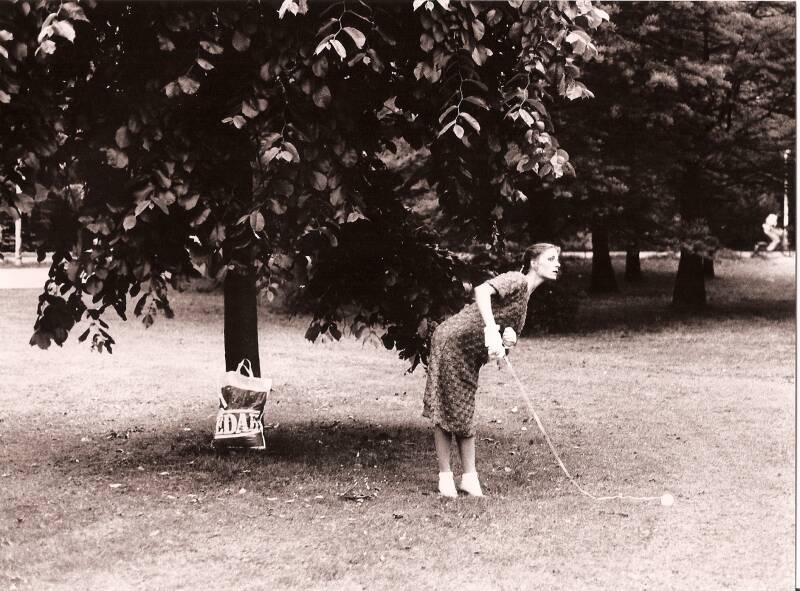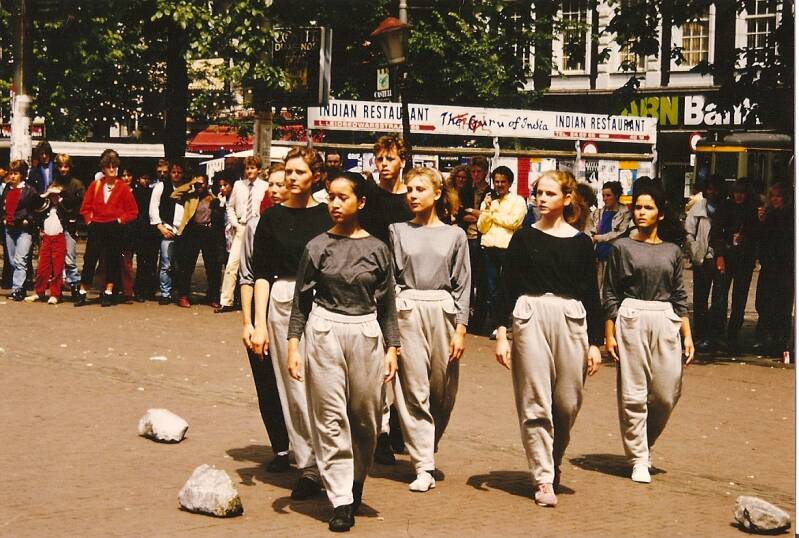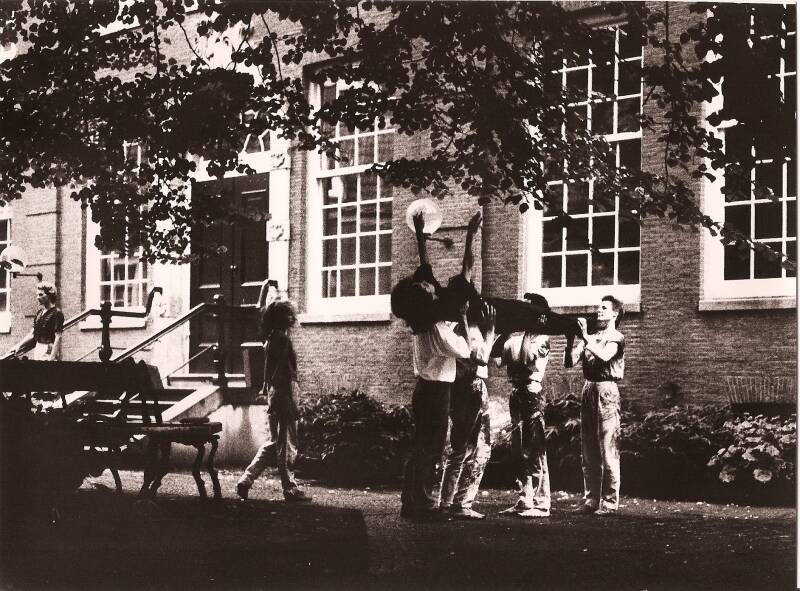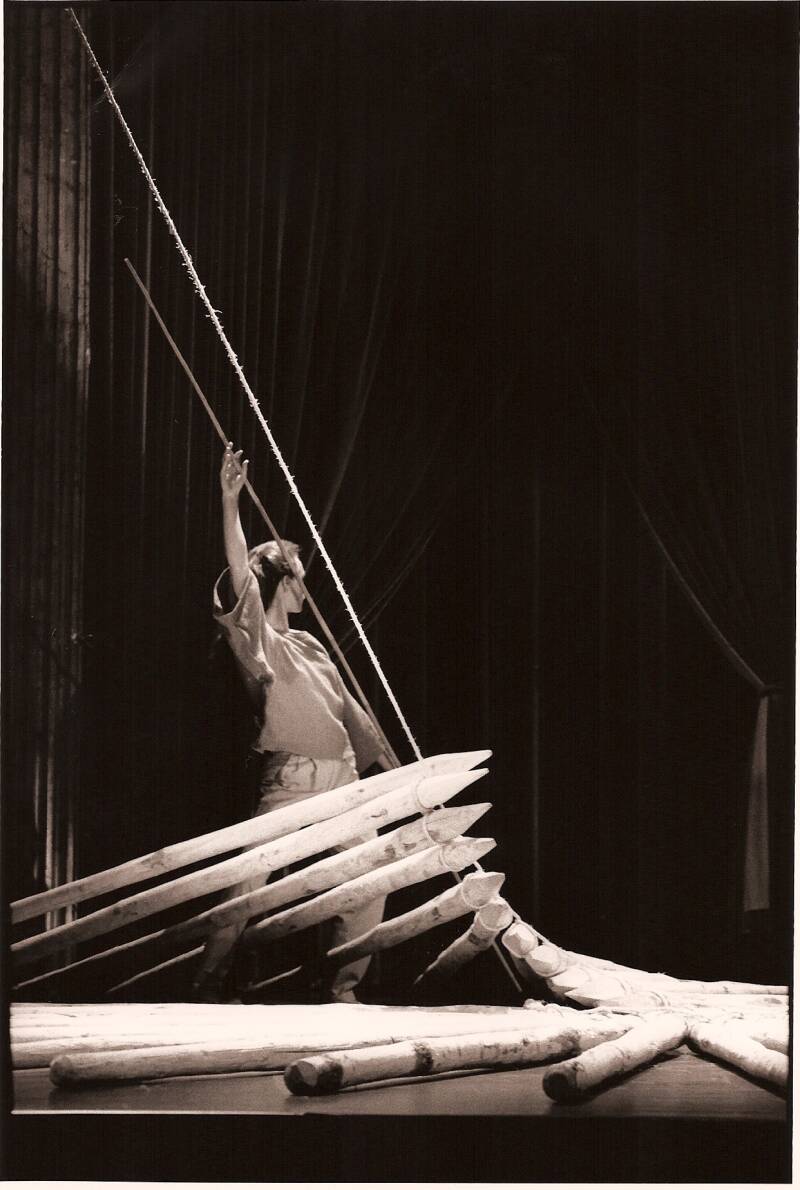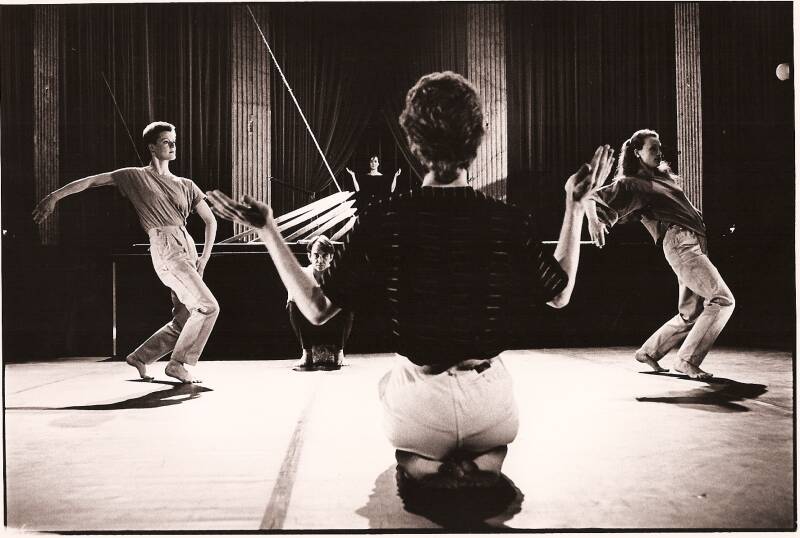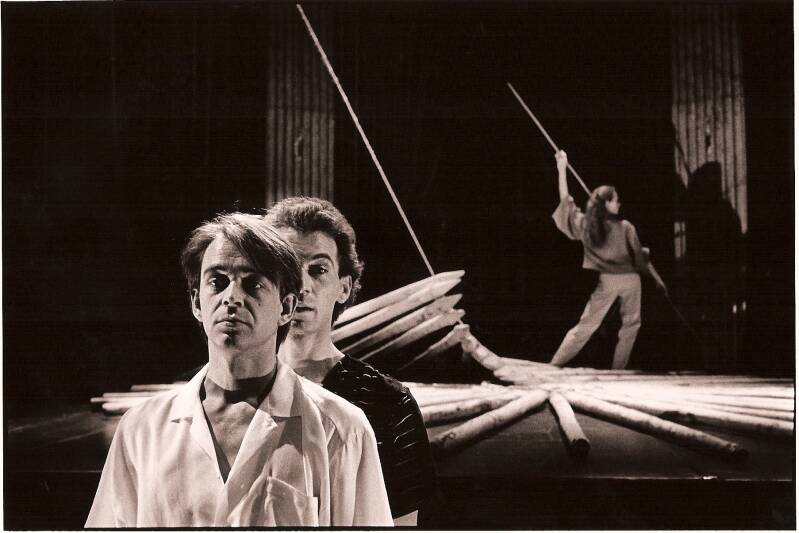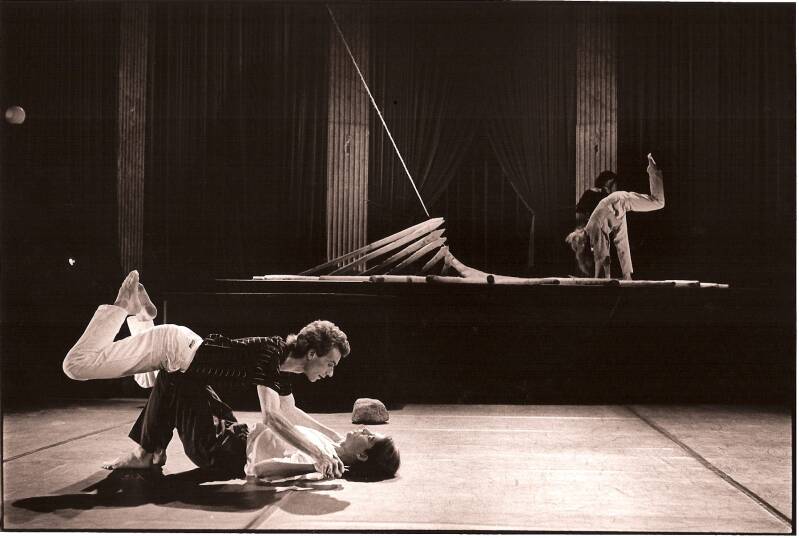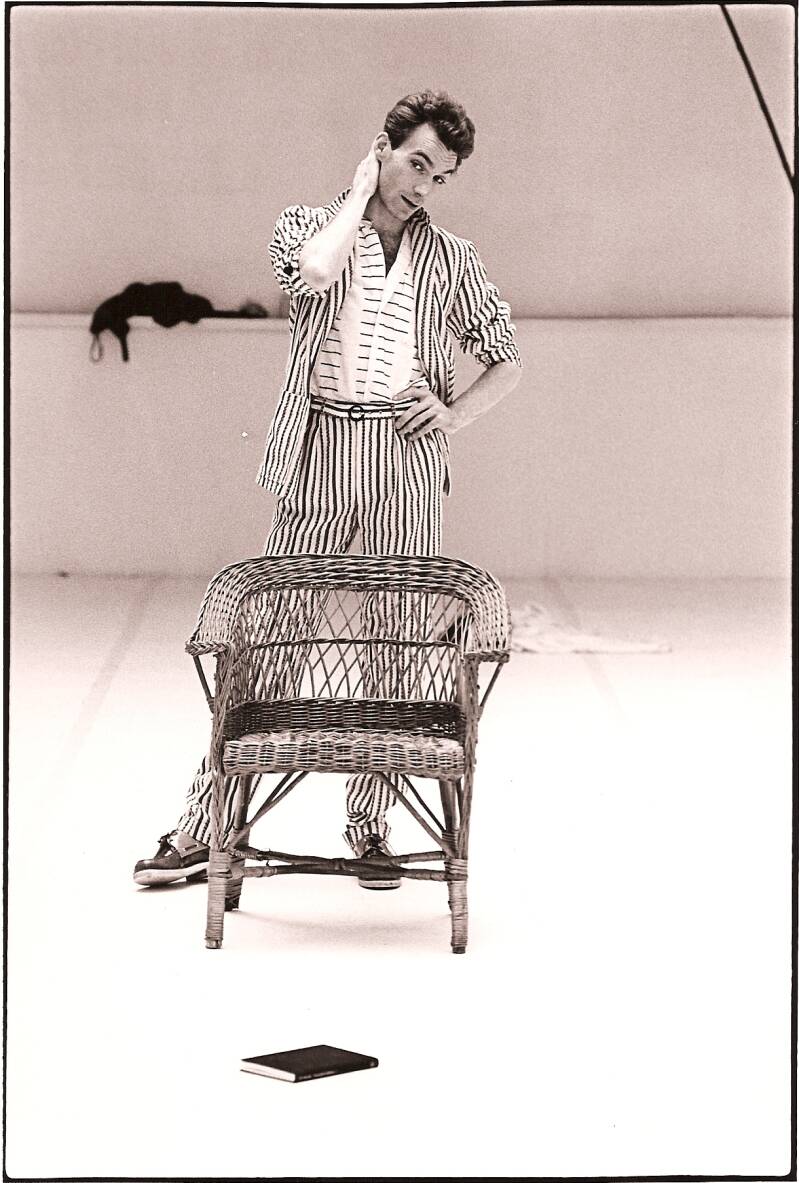The worst is trying to be fashionable
when that fashion doesn’t suit you
-Francis Poulenc-
NORTH STAR 1980
In this era of formalistic minimalism, I decided to move beyond the facade of the emperor's new clothes and choreograph to the specific dramatic images the music of Philip Glass evoked in me.
I premiered the piece in the 1980 Utrecht Dance Festival and though it was an instant audience favorite, I never performed it again.
I had made my point, valued the experience, but didn't want to be identified with the label.
Music: Philip Glass:
North Star; Victor's Lament

Together with California born and raised dancer-choreographer Ellen Crawford, I founded DANSKERN in 1980.
In 1975 Ellen started coming to my open company classes at Wegtejater and after a few months became my dance partner.
Riding her bike one day through the traffic light, she was stopped by a policeman; her considerable feminine charm couldn't save her, he wanted to see her residence permit, which she couldn't show, but luckily a dancer friend of ours spotted her and intervened on her behalf, saying Ellen was staying with her as a visiting tourist.
Still the lenient mid 1970's, the constable shrugged it off and let her go.
Later that day, at a company meeting at my house, where I was living with my male lover, Ellen told me this story.
"Then the best option is we get married", I suggested and we right away made the announcement to cheers of the assembled company.
When I went to sign up for our marriage registration, I began to realize it meant much more to me than the marriage of convenience I'd proposed; back in the studio for the rehearsal of our new duet, I shared this realization with Ellen, who admitted she had fallen in love with me months ago.
What to do now? "Well, let's rehearse", I said, and so we did.
We married in the summer of 1975 and although our marriage was as passionate and real as our dancing, it also was convenient; being part of each other's family secured Ellen's legal status in Holland. while it made my introduction to and extended stays in the US easy and matter of fact; no permits, no visas necessary.
My gay self eventually won out though and in 1984 Ellen and I got divorced; we said our final farewell on Lower Broadway, NYC.
"Good lord", the driver of the cab Ellen got into exclaimed, "If ever I saw two people in love...!".
SPACESCAPE 1980
For the opening of our new Amsterdam-arts-council funded studio, Ellen and I created a series of dance events to inaugurate the space, inspiring several components of future theatrical and site-specific creations.
UPS & DOWNS 1980
Choreographer Ruth Meyer, who a.o. trained with the Martha Graham Co., created this duet for Ellen and me, in dialogue with two mobile objects and each other, mid-winter 1979-'80 in our new, no heating installed yet, freezing cold studio.
Ruth all bundled up, a small electric heater at her feet, Ellen and I in woollen sweaters and tights restlessly moving to withstand the biting cold.
The end result was a charm, warming the heart of the audience, to original music for (church) organ by Kees Nagelkerk.
RIEN NE VA PLUS 1981
four dancers, a mime artist, two large rotating bands, original music for marimba player by composer Henk van der Meulen
Once again choreographer Ruth Meyer brought inspiring components together, yet unfortunately this time the magic didn't quite happen.
WINTERING 1981
• Wintering
• We Shot At Dawn And Had To Wait Two Hours For The Rain And Fog To Clear
• The Lovers
Choreography: Adriaan Kans (1); Ellen Crawford (2,3)
Dancers: Anne Affourtit, Ellen Crawford, Adriaan Kans
Music: Wintering: John Cage: String Quartet; Nocturne for Violin and Piano; A Valentine Out Of Season; Music for Marcel Duchamp for Prepared Piano; Cole Porter: What is This Thing Called Love; Rodgers&Hart: The Lady is a Tramp
We Shot At Dawn: John Cage: Amores for prep. piano, percussion
The Lovers: Igor Strawinsky: Tango for piano
'With a little help' of American friends, we organized performances on Californian soil.
Unbeknownst to us, distinguished Los Angeles Times dance critic Lewis Segal came to our opening night:
Danskern held attention primarily through choreographic imagery evoking the pantheon of European painting from Vermeer to Magritte, through artful juxtaposition of spatial planes (with contrasting theatrical styles often creating, literally, layers of meaning); through intriguing thematic statements, through the skill of its performers - particularly the vibrant, voluptuous Anne Affourtit and the catlike, bone-thin Adriaan Kans.
Strolling along Santa Monica beach, the next day found me consoling Anne: No, Anne, he doesn’t mean you’re fat! This bone-thin cat isn’t jumping your voluptuous beef. The guy thinks you’re hot!
Female dancers and body weight, don’t ever go there!
A FURNISHED ROOM 1982
• A Furnished Room
• Litany
• Und Sie Wissen Nicht, Wer Ich Bin
Choreography: Ellen Crawford, Adriaan Kans
Dancers: Anne Affourtit, Ellen Crawford, Chris Hollingsworth, Adriaan Kans
Actress: Dea Koert
Music:
A Furnished Room: Igor Strawinsky: Tango for piano; Tango for jazz ensemble; Pastorale for woodwinds and violin; Pastorale for soprano and piano; Alexander Scriabin: Nuances and Deux Poèmes for piano
Litany: Béla Bartók: Suite opus 14 for piano
Und Sie Wissen Nicht, Wer Ich Bin: Kurt Weill, Bertolt Brecht
Von der Kindesmörderin Marie Farrar - Berlin Im Licht Song - Havana Lied - Und Was Bekam Des Soldaten Weib?
A Furnished Room Inspired by a story of American novelist O’Henry
Restless, shifting, fugacious as time itself is a certain vast bulk of the population of the red brick district of the lower West Side.
Homeless, they have a hundred homes.
They flit from furnished room to furnished room, transients forever - transients in abode, transients in heart and mind. (O’Henry)
Litany
On the wall in chalk is written:’They want war’. He who wrote it, has already fallen (Bertolt Brecht)
Litany opens with me upstage bellowing out:
I swear to serve my country with all my heart, with all my body and with all my power, I swear I have no father and no mother, I swear I have no sister and no brother...(etc),
rounding of my pledge of allegiance: I swear that all those born from my people are born to live and die for the glory of my people.
After a performance in an Italian fort once a Mussolini headquarter, a charming young Italian guy embraced me with tears in his eyes.
Upon his draft in the army, he had had to swear a similar pledge only years ago.
The despair and rage I had just danced, were his own.
Und Sie Wissen Nicht, Wer Ich Bin
In these heydays of abstraction and formalism, our outspoken lyricism and expressiveness were frowned upon by our brothers and sisters in (post-)modern dance.
Drama, character development, downright storytelling at times.... wasn't dance supposed to be about dance and dance only!?
Audiences and press were favourable.
Damn!
RESEARCH 1981-1984
It is the most tragic fate of young people who sense that it will be impossible for them to live without being poets or painters or sculptors (or dancers), that they do not find true counsel, all plunged in an abyss of forsakenness as they are; for in seeking a powerful master, they seek neither words nor information: they ask for an example, a fervent heart, hands that make greatness.
(Rainer Maria Rilke, writing to Auguste Rodin)
In the works of these forefathers and -mothers I found them
the hands making greatness.
RESEARCH in Los Angeles, San Francisco & the Bay Area
1981 (6 months) - 1982 (2 months)
On a travel grant from the Dutch Ministry of Culture
Developments in Modern Dance on the US West Coast
RESEARCH in New York
1983 (8 months) - 1984 (3 months)
On a travel grant from the Dutch Ministry of Culture
History of American Modern Dance
...and from mid-1983 I could blow bubbles of delight, staying rent-free with May O'Donnell in her 2nd, upstairs studio (annex kitichen + bedroom) on Lafayette Street, downton Manhattan
RENGA
a series of
SITE-SPECIFIC DANCE PERFORMANCES
1984
Created in cooperation with visual artist
LANA DONSE
cooperating with three visual artists
Performed over a four-week period
on various locations in Amsterdam:
Vondelpark
Leidseplein
Begijnhof
Dam square
court-yards A’dam Historical Museum
shop-windows Bijenkorf department store
various streets and squares
with a troupe of:
eighteen dancers (incl. me)
an actor
a mime
a soprano
four musicians
(guitarist, organist, 2 pianists)
RENGA did its dancing in streets, parks, courtyards, climbed buildings, rowed boats, or had dancers manipulating the 75-meter long Renga-screen, a Chinese dragon-like construction of cloth and bamboo.
Music:
Johann Sebastian Bach
John Cage
Manuel de Falla
George Gershwin
Charles Ives
Franz Peter Schubert
Igor Strawinsky
Pyotr Ilyitch Tchaikovsky
Text:
Franz Kafka
Martinus Nijhoff
Annie M.G. Schmidt
RENGA INSIDE
&
LANDSCAPE WITH TRAVELER
1984
• Renga Inside
While working on RENGA, we showcased elements a few months prior to the main event,
getting the feel of the work in performance, while creating that special bond of performing together.
• Landscape with Traveler
Music: Béla Bartók: Out of Doors piano suite; Igor Strawinsky: soprano solo from Mavra
Text: a monologue of poems by Constantin Cavafy
While creating RENGA, in the wee hours, 'far from the madding crowd', in the silence of the empty studio, I traversed my inner landscape to create a solo combining dance-text-music.
I first read Cavafy's poetry sometime in the early 1980's.
As a gay man, growing up in the homophobic 1950's/60's, his voice hit me like a thunderbolt.
His unabashed admiration for male beauty, his painful longing for the love that dare not speak its name.
Times changed during the 1970's and 80's, but in 1955 as a five-year old, hidden behind a tree watching grown up boys playing football, secretly admiring their attractive male bravado, I intuitively knew what I longed for was wrong, a forbidden sin I'd better never ever confess to.
In 1981 and '82, during my Research period on the West Coast, I lived, of all places, on Castro Street SF, with three lovely guys: Peter Childers, dancer, Eric Hellman, dance critic and Jim (James) Ochman, painter.
Peter and Eric were lovers, both died young in the late 1980's of Aids.
Jim, the gorgeous, cerebral painter, passed over in 2019.
I loved both him and his shimmering, meditative work.
The wealthy home had in its entrance
an enormous, extremely old mirror,
that must have been bought at least eighty years ago.
An unusually handsome lad, a tailor's employee
(on Sundays an amateur athlete),
stood holding a parcel. He delivered it
to someone in the house, who carried it inside
to fetch the receipt. The tailor's employee
was left by himself, and he waited.
He approached the mirror and took a look at himself,
and he straightened his tie. Five minutes later
they brought back the receipt. He took it and left.
But the old mirror that had seen and seen,
during the long, long years of its existence,
thousands of objects and faces;
but this time the old mirror was delighted,
and it felt proud that it had received unto itself
for a few moments an image of flawless beauty.
Constantine Cavafy, The Mirror in the Hall, translated by Rae Dalven



